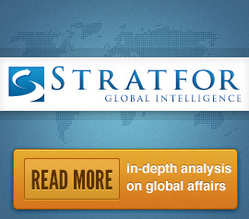At a Thursday meeting, the defense ministers of the Visegrad Four (V4) - a loose regional grouping of the Czech Republic, Hungary, Poland and Slovakia - decided to create a battle group. The decision is significant but expected. It's significant because it shows that the V4 states are willing to upgrade their loose alliance to the security and military level. It's expected because STRATFOR has long forecast that they would be forced to take security matters into their own hands by NATO's lack of focus on the singular issue that concerns them: Russian resurgence in the post-Soviet sphere.
Europe's two major political and security institutions are the European Union and NATO, both born in the aftermath of World War II, which devastated Europe. They then evolved in the shadow of a looming confrontation with the Soviet Union, which threatened to revisit such devastation. Approximating national interests to form a common security strategy was not perfect during the Cold War, but it was simple, especially with Soviet armored divisions poised for a strike at Western Europe via the North European Plain and the Fulda Gap.
The Cold War and the memory of World War II acted as bookends holding European states on the metaphorical bookshelf. Once the two eroded in the 1990s, the books did not immediately come tumbling down. Instead, the drive to expand NATO and the European Union became an end to itself, giving both organizations a raison-d'etre in the 1990s. Inertia drove the entities.
But a number of factors since the mid-2000s have shaken this unity, primarily the emergence of an independent-minded Germany and the resurgence of Russia as a regional power. While Russia does not pose the same threat it did during the Cold War, Central Europeans continue to see Moscow as a security threat and would prefer for NATO to treat Russia accordingly. Germany sees Russia as a business opportunity and an exporter of cheap and clean energy. The two views collided most recently during discussions for NATO's New Strategic Concept, producing a largely incomprehensible mission statement for the alliance. There are other tremors. The United States, the guarantor of European security structures, has spent the last 10 years obsessed with the Middle East and has been unable to prevent the divergence of interests on the European continent.
NATO has unsurprisingly become incapable of approximating national security interests toward a common mean, while the European Union has failed - spectacularly so in Libya - to create a coherent foreign policy. Instead, European countries are diverging into regionally focused groupings. The two most prominent of these are the Nordic states, which are cooperating closely with the Baltic states, and the V4. The blocs' security concerns regarding Russian intentions are rooted in separate geographies. The Nordic and Baltic states' focus is in the Baltic Sea region, while the V4 is concerned with Moscow's strength in the traditional border states of Belarus, Ukraine and Moldova. The two regional blocs remind us of primordial continental plates splitting off from Pangea. Europe's tectonic plates, held together for 60 years by geopolitical conditions, have begun to diverge.
Poland is key. It shares a Baltic Sea coast with Nordic neighbors to the north, of which it perceives Sweden as a strategic partner. But its historical roots are heavily rooted in the northern slopes of the Carpathians, a geographical feature it shares with the other V4 members. It also happens to be the United States' most committed Central European ally, as well as the region's most populous country and most dynamic economy. Poland could therefore be pivotal in any divergence of the blocs from the European core and hamper Moscow's national security designs.












